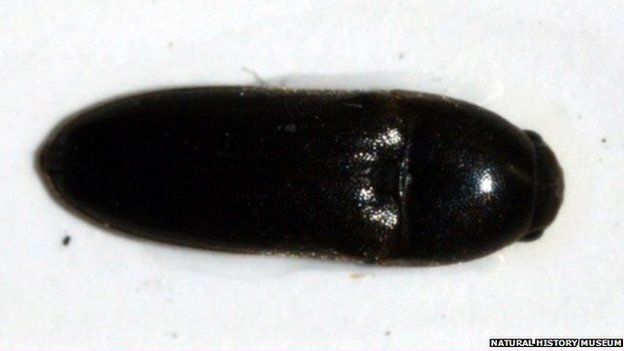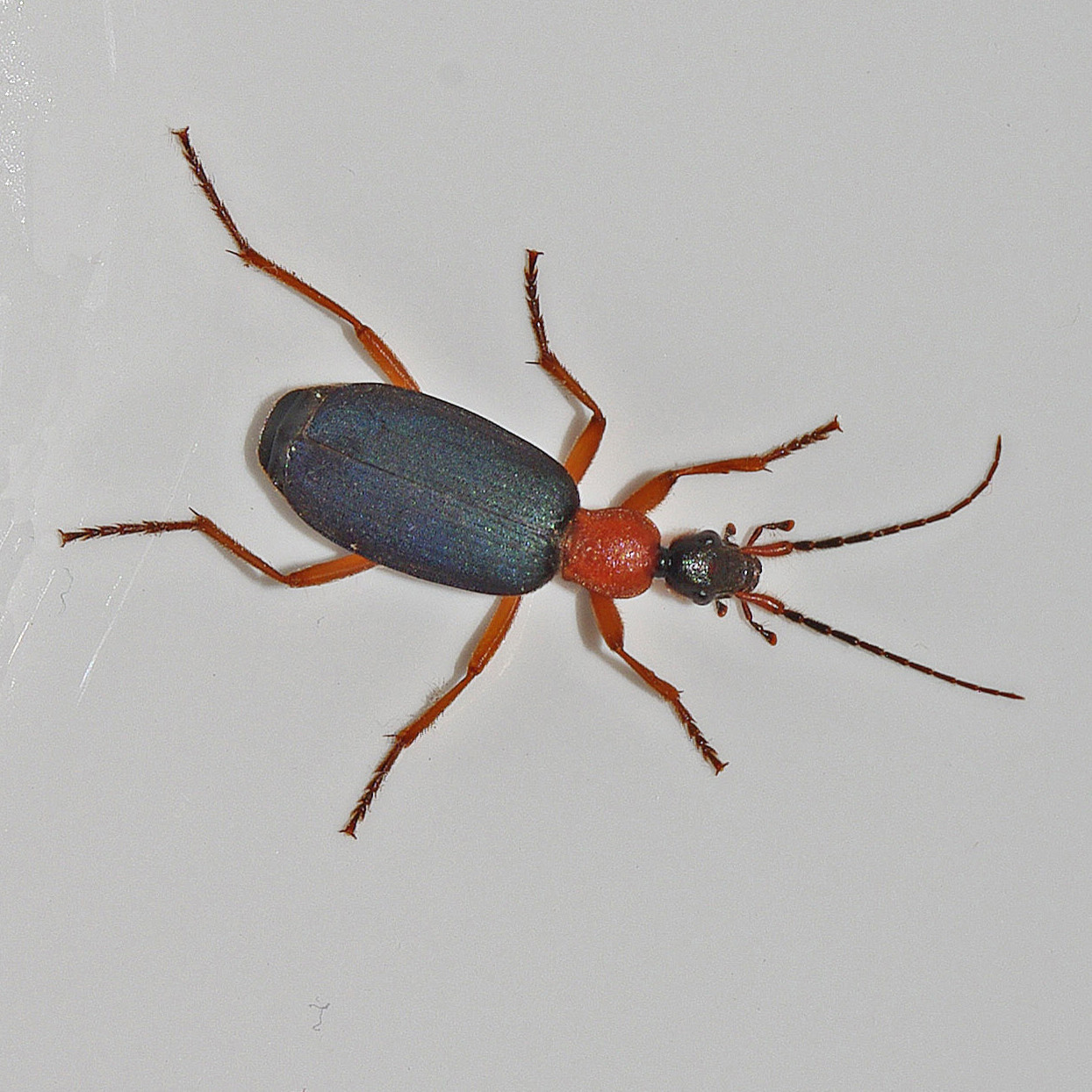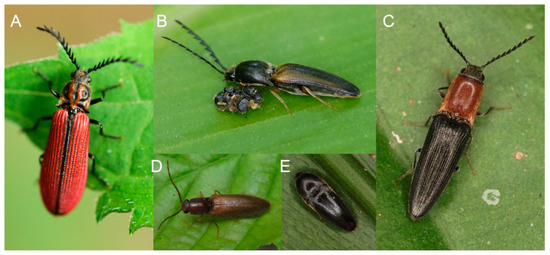false click beetle in house
Orkin Termite Treatment Pest Control Exterminator Service. Sometimes with colorful markings on its thorax.

Click Beetle Wireworm Extension Entomology
The larvae of a few species called wireworms can be serious pests of corn and other grains especially after a field has been left fallow a field that has been left to grow naturally without help from nutriants or farming.

. One common genus often found in houses is Conoderus. Click Beetles are harmless though some species are agricultural pests. Click beetles are not indoor pests however they are attracted to lights near doors and may come inside by mistake.
Adult click beetles are attracted to light but usually only invade buildings near the fields where they live seeking shelter or looking for prey rather than breeding or feeding. Click beetles are found throughout Australia. The best way to avoid encounters of the clicking kind starts with eliminating opportunities for click beetles and other non-threatening but annoying insects to enter your home.
Based on images posted to BugGuide this looks like a harmless Click Beetle in the genus Aeolus. Robert Vigneault Oka QC. The photographs below illustrate why these beetles are so striking.
Every year in late May and early June Perothops witticki appear on my property and often land on the stucco of the house during the daytime. According to BugGuide. The best solution for click beetles or any similar occasional invader is not pesticides.
They tend to enter your home through holes in doors or window screens or gaps around windows doors eaves and chimneys. They are a cosmopolitan beetle family characterized by the unusual click mechanism. Dont forget the window sills you might have to run to your hardware store to replace old and weak spots that are or could become entry points for bugs.
The largest beetle the Titan beetle can grow to nearly 7 17 cm. Other names include elaters snapping beetles spring beetles or skipjacksThis family was defined by William Elford Leach 17901836 in 1815. Click beetle Elater Skipjack Blacksmith beetle Scientific name.
Most click beetles are dull and small to medium sized with little or no ornamentation. Click beetle larva feed on plants and vegetables like potatoes or corn so gardens will attract them. In fact many species of false click beetles can actually click.
Presumably these spots have some selective value in frightening a would-be predator. The larvae of click beetles are generally plant-eaters and are known as wireworms because of their hard shiny cylindrical body. Yellow lights are the cheapest and easiest way to take care of most of your problems.
However some species can get up to 2 inches long and can be luminescent or brightly colored. The term false click beetle was a misnomer believing these beetles are incapable of snapping into the air. If you are having a serious invasion of the click beetle it may be necessary to add a chemical barrier to strengthen your defenses.
Larger insects usually come in under doorways especially doors with glass through which lights shine at night or doors next to porch lights. How to get rid of click beetles naturally Use a vacuum manual removal Repair your home Mulch your soil Avoid excess water Remove excess moisture Switch your substrate Clean up your garden Lure natural predators Plant hardy plants Reduce lighting. The click beetle is able to do this my snapping.
If these insects find their way into homes it is a sign of a population of click beetles living somewhere outside. The Scydosella musawasensis beetle is less than 1 mm long. It has a characteristic pair of spurs and sometimes colorful markings on its thorax.
Go around your home and seal every hole and other possible entry point. Click beetles may range from small rounded species a few millimeters long to over 5 cm long but the most common species are long narrow brown beetles around 2 cm long or less. They are about 25mm long with shiny yellow-orange bodies.
Click beetles can flick themselves upright when lying on their back using a spring. The true eyes are much smaller and are located on the head anterior to the false eyes. Adult has a dark hard elongated body.
Click beetles get their name from the clicking sound they make when turned on their back and attempting to flip over. Larvae live in the soil and larvae may be a minor pest of corn and potatoes. They can ruin potato and root crops.
Click beetles also known as skipjacks snapping beetles or spring beetles are generally not indoor pests though house lights near doors may draw them inside. In hot weather Click beetles are prone to enter peoples houses at night if entrances such as windows are left opened. Elateridae or click beetles or typical click beetles to distinguish them from the related families Cerophytidae and Eucnemidae are family of beetles.
Sealing or caulking all cracks and crevices around your foundation and around windows doors and other entryways will discourage click beetles from entering your home. They spend up to four years underground munching through plant roots and stem bases until pupating and emerging as adult click beetles. If found inside a vacuum makes a great.
Adult click beetles tend to hide on the ground in dark crevices of. However the average size of most beetles is under 1 25 cm long. The False Click Beetle Perothops witticki.
The large false eyes on the pronotum of adults are characteristic of this genus. This is a Click Beetle in the family Elateridae a large family with many similar looking species. Its body is hard and elongated.
Rather its to figure out where the insect is invading and how it is getting in. Adults in grasslands fields gardens. Click beetle larvae are the notorious wireworms despised by gardeners.
They are called Click Beetles because of their ability to snap their body to right themselves if they wind up on their backs an action that produces an audible clicking sound. Click beetles like to hide in dark crack and crevices in tree bark under things on the ground or debris near the structure. The common name is just a means to distinguish eucnemids from the true click beetles for different reasons largely by the lack of a free labrum and straight.
When set on its back it can bend its body and suddenly straighten out propelling itself into the air to right itself and. We dont know why they are entering your home unless they are attracted to lights. The click beetle is dark-colored A.
Although many beetle species are black beetles can be a range of colors from green to brown red or orange.

Bug O The Week False Bombardier Beetle Redux Riveredge Nature Center

Rare False Click Beetle Spotted For First Time On Wimbledon Common Bbc News

Common Household Bugs Pest Identification Control Planet Natural Household Pests Pests Pest Control

False Chinch Bug Pest Control Canada

False Bombardier Beetle What S That Bug

Bug O The Week False Bombardier Beetle Redux Riveredge Nature Center

Bug O The Week False Bombardier Beetle Redux Riveredge Nature Center

False Darkling Beetle Scotochroa Atra Bugguide Net

False Click Beetle Rhagomicrus Humeralis Bugguide Net

Dangerous Noble False Widow Spiders Are Spreading Across The Uk For The First Time Dangerous Noble False Spiders Spreading Widow Spider Spider Pet Spider

Insects Free Full Text Click Beetle Mitogenomics With The Definition Of A New Subfamily Hapatesinae From Australasia Coleoptera Elateridae Html

False Bombardier Beetle Pest Control Canada

Flip Bug Stink Bugs Shield Bugs Beetle

False Bombardier Beetle What S That Bug
Eyed Click Beetle Vol 2 No 29 Mississippi State University Extension Service

False Click Beetles Family Eucnemidae Inaturalist Canada

Epiphanis Cornutus Eucnemidae False Click Beetles Bichos Escarabajos Insectos

